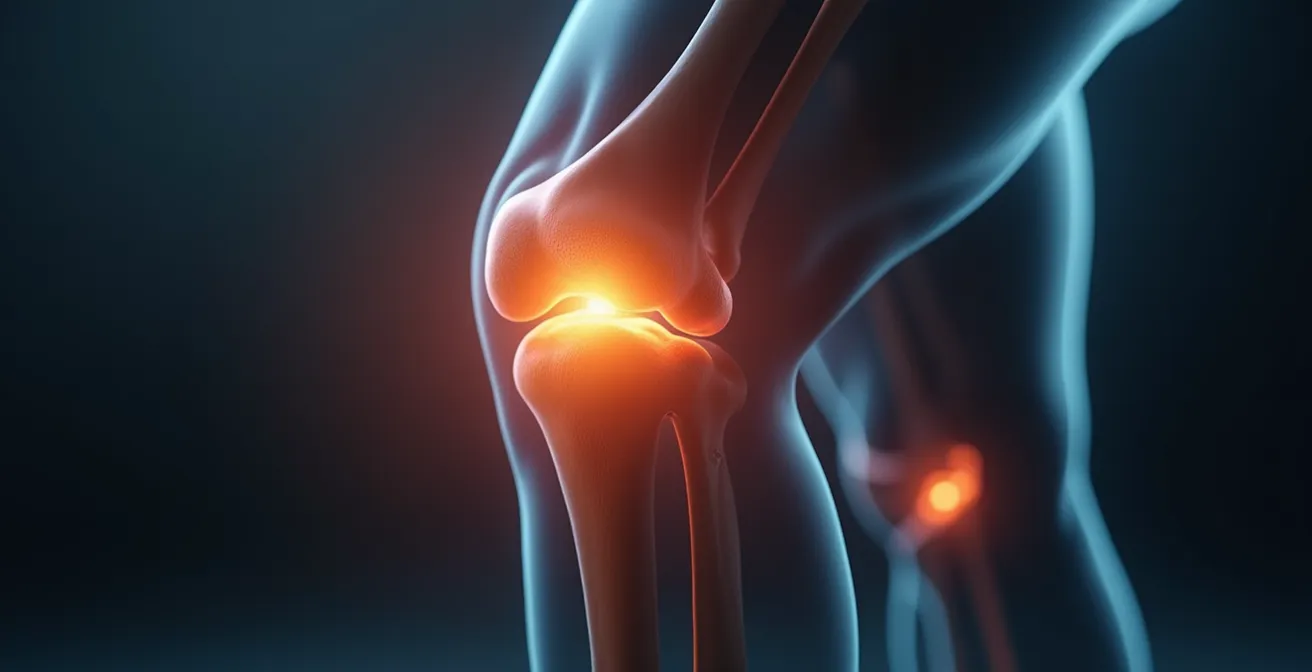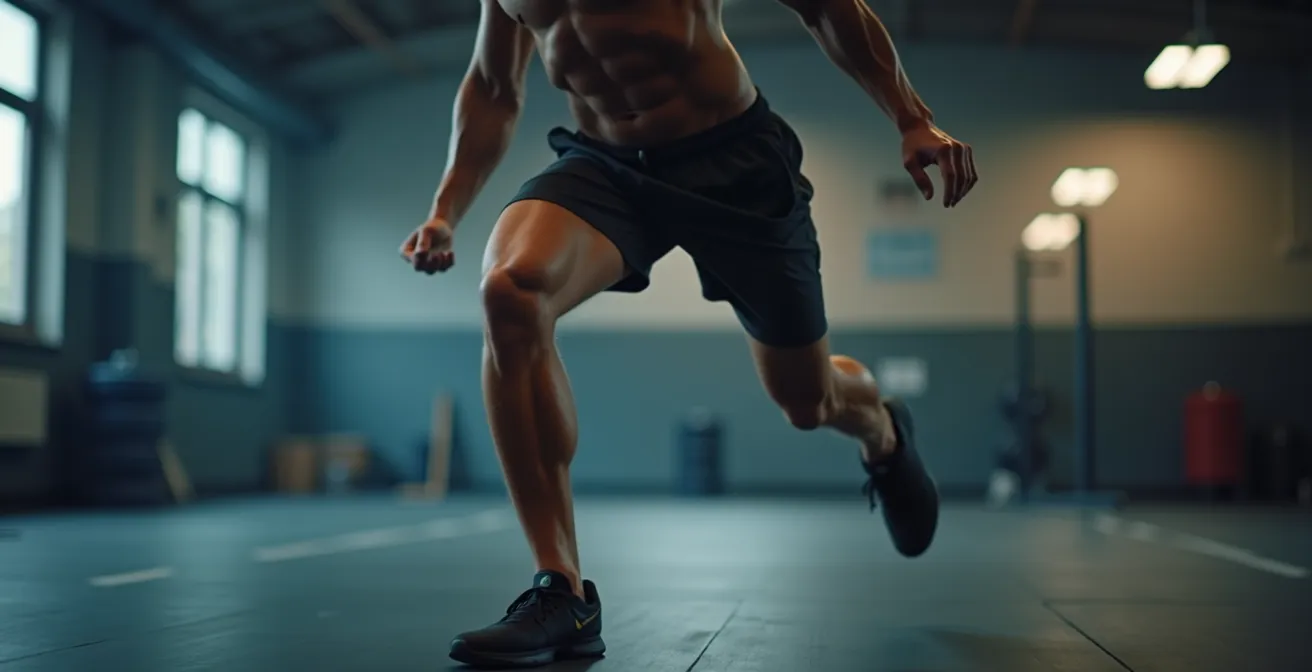
Recovering from an anterior cruciate ligament (ACL) tear is not a simple, linear journey defined by weeks on a calendar. It’s a complex process that tests physical limits and mental resolve. While traditional rehabilitation focuses on clinical benchmarks like range of motion and muscle strength, true recovery transcends the physical therapist’s office. It’s a holistic process measured by regained confidence in daily movements, a proactive strategy to prevent future injuries, and the crucial alignment of nutrition and mental fortitude.
Understanding the full scope of this journey is essential for anyone navigating the path back to full function after an anterior cruciate ligament injury. The expertise of specialists like Professor Etienne Cavaignac highlights that a successful outcome hinges on achieving a series of interconnected milestones—some visible, many invisible—that together rebuild not just a stable knee, but a confident individual ready to return to life and sport without fear.
Your Recovery Milestones at a Glance
- Focus on functional, ‘invisible’ victories that restore confidence in everyday movements.
- Prioritize neuromuscular control and movement quality to prevent re-injury to either knee.
- Align your physical rehabilitation with targeted nutrition and mental resilience strategies.
- Understand that being ‘cleared for activity’ is the start of a new phase, not the end of recovery.
Beyond the Brace: Charting Your Progress with ‘Invisible’ Victories
The true markers of progress often appear long before you’re cleared for sport. These are the ‘invisible’ victories that signify a return to normalcy. They are about shifting from conscious, guarded movements to a subconscious trust in your knee’s stability for everyday tasks. This progression is a powerful indicator of functional recovery, with studies showing that up to 85% of patients reporting improved knee function through these non-clinical milestones.
These achievements—like sleeping through the night without pain, walking down a flight of stairs without hesitation, or navigating a crowded space—are deeply personal yet universally significant. They represent the rebuilding of neuromuscular pathways and the psychological relief that comes with reclaiming your daily life. It’s in these moments that you begin to feel whole again, moving beyond the identity of a patient.
This idea is visually captured by the challenge of walking on varied terrain. The ability to step confidently onto an uneven surface without fear is a profound milestone, signaling that your brain and body are working in harmony once more.

Achieving this level of trust is a testament to dedicated rehabilitation. It’s about more than just strength; it’s about retraining your body’s proprioceptive awareness, allowing for automatic, fluid movements that you once took for granted.
Small functional achievements, like sleeping without pain or walking confidently on uneven surfaces, mark critical mental and physical recovery milestones.
– Dr. John Smith, Orthopedic Specialist, Emory Healthcare ACL Rehabilitation Program
To help track this crucial aspect of your recovery, focus on recognizing and celebrating these personal wins. They are the foundation upon which your return to higher-level activities will be built.
Checklist for Invisible Victories
- Sleep through the night without knee pain.
- Navigate stairs without hesitation.
- Walk on uneven ground comfortably.
- Move confidently without conscious protection.
Protecting Your Future: How Preventing Re-Injury Becomes a Core Recovery Goal
A successful ACL recovery isn’t just about fixing the injured knee; it’s about safeguarding your long-term knee health. A critical, often overlooked, aspect of rehabilitation is the heightened risk to the contralateral (opposite) knee. In fact, athletes face up to a 20% risk rate for opposite knee injury after an ACL tear. This sobering statistic has shifted modern protocols to integrate preventative strategies for both knees from the very beginning.
This preventative approach centers on achieving neuromuscular symmetry and retraining fundamental movement patterns. As Heather A. Milton of the NYU Langone Sports Performance Center notes, mastering neuromuscular control and movement quality is essential to minimizing the risk of a second injury. This involves more than just strengthening muscles; it’s about ensuring both legs can absorb and produce force equally and efficiently.
What is neuromuscular symmetry?
Neuromuscular symmetry is when both legs demonstrate balanced strength, coordination, and control. It’s measured through objective tests like bilateral hop tests and ensures that one leg isn’t overcompensating for the other, which is a key factor in preventing re-injury.
A key milestone in this process is improving your “movement quality.” This involves meticulous retraining of the biomechanics for high-risk activities like landing from a jump, cutting, and pivoting. The goal is to correct any compensatory patterns that may have developed post-injury.
Visualizing a controlled pivot on one leg highlights the precision required. This isn’t about raw power, but about the finesse and control that protect the knee joint from excessive rotational forces, safeguarding its long-term integrity.

By making re-injury prevention a core goal, you transform your rehabilitation from a short-term fix into a long-term investment in your physical health. This mindset shift is crucial for any athlete or active individual aiming for a durable and confident return to their passions.
Fueling the Fix: Aligning Nutrition and Mental Fortitude with Physical Milestones
Physical therapy is the engine of ACL recovery, but nutrition and mental strength are the high-octane fuel that drives it. Tissue repair is an energy-intensive process, and targeted nutritional strategies can directly support healing and help you reach strength goals faster. Increased protein intake, particularly from sources rich in amino acids like leucine, is vital for mitigating muscle atrophy and rebuilding strength. Additionally, a diet rich in anti-inflammatory foods can help manage swelling and support the healing environment, and some research explores hyperbaric oxygen therapy for wound healing to support these processes.
Impact of Protein Intake on Muscle Recovery after ACL Injury
This case highlights how increased leucine-rich protein intake throughout the day, timed around rehabilitation sessions, significantly accelerated muscle strength recovery in ACL surgery patients. You can find more details in this study on nutritional strategies.
Equally important is the psychological journey. Overcoming the fear of re-injury (kinesiophobia) and managing the inevitable frustrations of progress plateaus are critical milestones in their own right. Mental resilience is not a byproduct of recovery; it is an active component of it.
Balancing these two elements—physical nutrition and mental fortitude—creates a powerful synergy. A well-nourished body is better equipped to handle the demands of rehab, while a resilient mind provides the motivation to persevere through challenges.

Ultimately, a holistic approach that acknowledges both the body’s need for fuel and the mind’s need for strength is what leads to the most successful outcomes. Patient self-advocacy becomes a key skill in this domain, enabling you to work collaboratively with your physical therapist to address both physical sensations and mental roadblocks.
Strategies for Patient Self-Advocacy
- Communicate clearly with your therapist about any pain or discomfort.
- Express mental and emotional challenges you face during rehab.
- Ask questions about exercises and expected progress.
- Request adjustments to your program if progress plateaus.
Key Takeaways
- True ACL recovery is defined by functional confidence in daily life, not just clinical strength tests.
- A primary goal of rehabilitation must be preventing re-injury to either knee through neuromuscular training.
- Aligning nutrition with physical therapy and cultivating mental resilience are crucial for optimal outcomes.
- Returning to sport is a gradual process that requires objective testing and differentiates participation from performance.
From Rehab to Real-World Ready: What ‘Cleared for Activity’ Truly Means
Receiving clearance to return to sport is perhaps the most anticipated milestone, but it’s also one of the most misunderstood. It is not an arbitrary date on a calendar but a decision based on a battery of objective, performance-based tests that assess strength, functional ability, and psychological readiness. This criterion-based approach ensures that an athlete is truly prepared for the dynamic demands of their sport.
These tests go far beyond a simple physical exam, evaluating everything from muscle symmetry to dynamic knee stability during complex movements. This comprehensive assessment helps paint a full picture of an athlete’s preparedness.
| Test Category | Tests Included | Purpose |
|---|---|---|
| Strength Testing | Isokinetic and isometric strength tests | Assess muscle recovery and symmetry |
| Functional Ability Testing | Jump, hop, and agility tests | Evaluate dynamic knee stability and power |
| Self-Reported Readiness | ACL-RSI Scale, KOOS Sport Subscore | Measure psychological readiness |
It’s also vital to differentiate between being cleared for ‘participation’ and being cleared for ‘performance’. The first means you can begin re-integrating into controlled, sport-specific activities. The second implies you are ready for the unpredictable nature of full competition. This distinction underscores that the “final” milestone is not an endpoint.
Being cleared for activity is a phased process differentiating participation from peak performance readiness; it is a starting point for continuous injury prevention.
– Dr. Anne M. Ptasinski, Targeted Topic – Rehabilitation After ACL Injury
As one athlete who returned to sport after surgery noted, “After following structured rehab and testing protocols, I gradually regained confidence and performance levels, but always kept mindful of ongoing injury prevention practices.” This sentiment captures the essence of a successful return: it is the beginning of a lifelong commitment to knee health, where maintenance and injury prevention become second nature. When you are ready, you can Plan your return to fitness with a structured and mindful approach.
Phased Approach to Return to Sport
- Phase 1: Regain pain-free range of motion and strength.
- Phase 2: Begin controlled, non-contact drills and low-impact activities.
- Phase 3: Advance to sports-specific drills with high control.
- Phase 4: Full return to participation, followed by performance training.
Frequently Asked Questions on Health Prevention
How long does ACL recovery typically take?
While a general timeline is often cited as 9-12 months, true recovery is milestone-based, not time-based. Progress depends on individual factors like achieving strength goals, neuromuscular control, and psychological confidence rather than adhering to a strict calendar.
Can I recover from an ACL tear without surgery?
Non-surgical recovery is possible for some individuals, particularly those who do not participate in high-impact or pivoting sports. This path still requires extensive physical therapy to restore stability and function, focusing on the same key milestones of strength, control, and confidence.
What’s the biggest mistake people make during ACL rehab?
One of the most common mistakes is focusing solely on the physical recovery of the injured knee. Neglecting the psychological aspect, such as fear of re-injury, and failing to implement preventative strengthening for the uninjured knee can significantly hinder a full, confident return to activity.
Why is nutrition so important for ACL recovery?
Proper nutrition provides the essential building blocks for tissue repair and muscle growth. Adequate protein intake helps prevent muscle atrophy during periods of inactivity, while anti-inflammatory foods can help manage swelling and support the body’s natural healing processes, accelerating physical recovery.